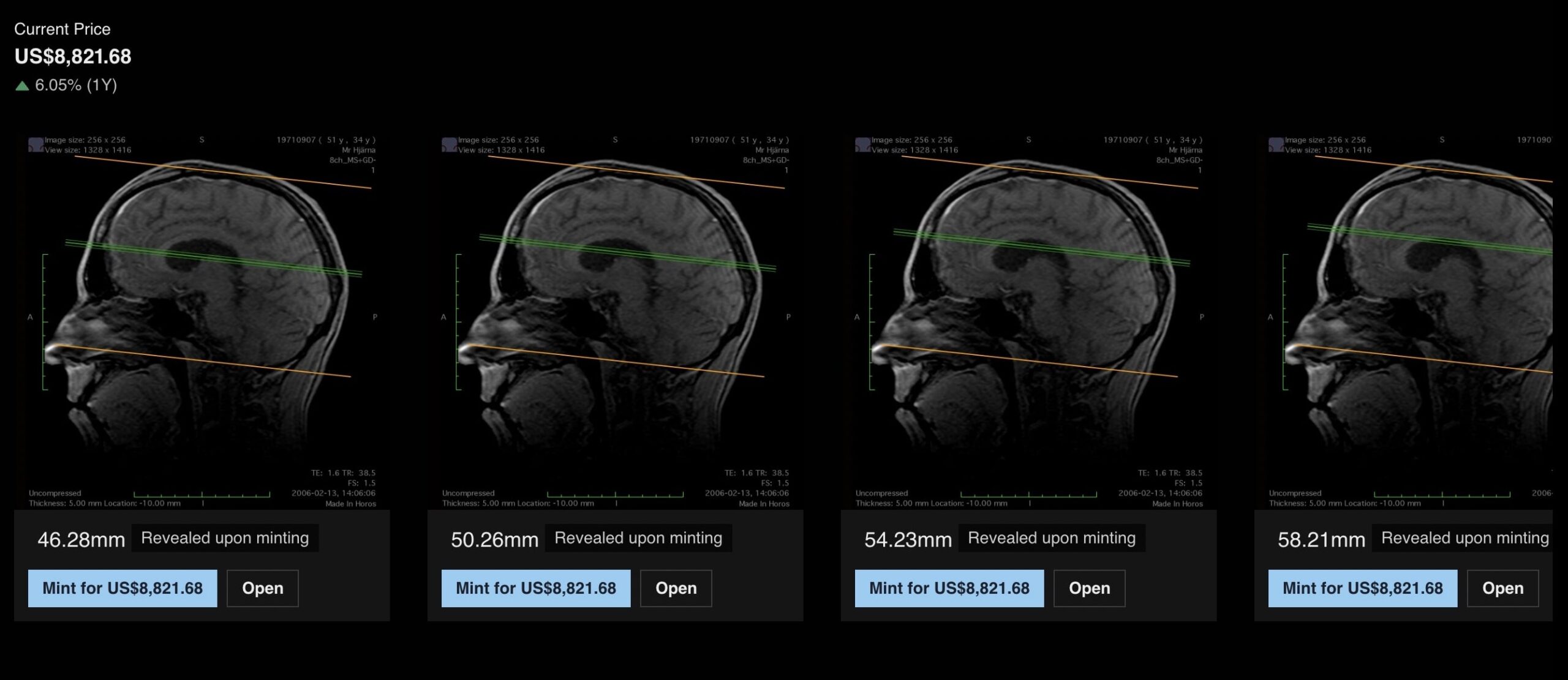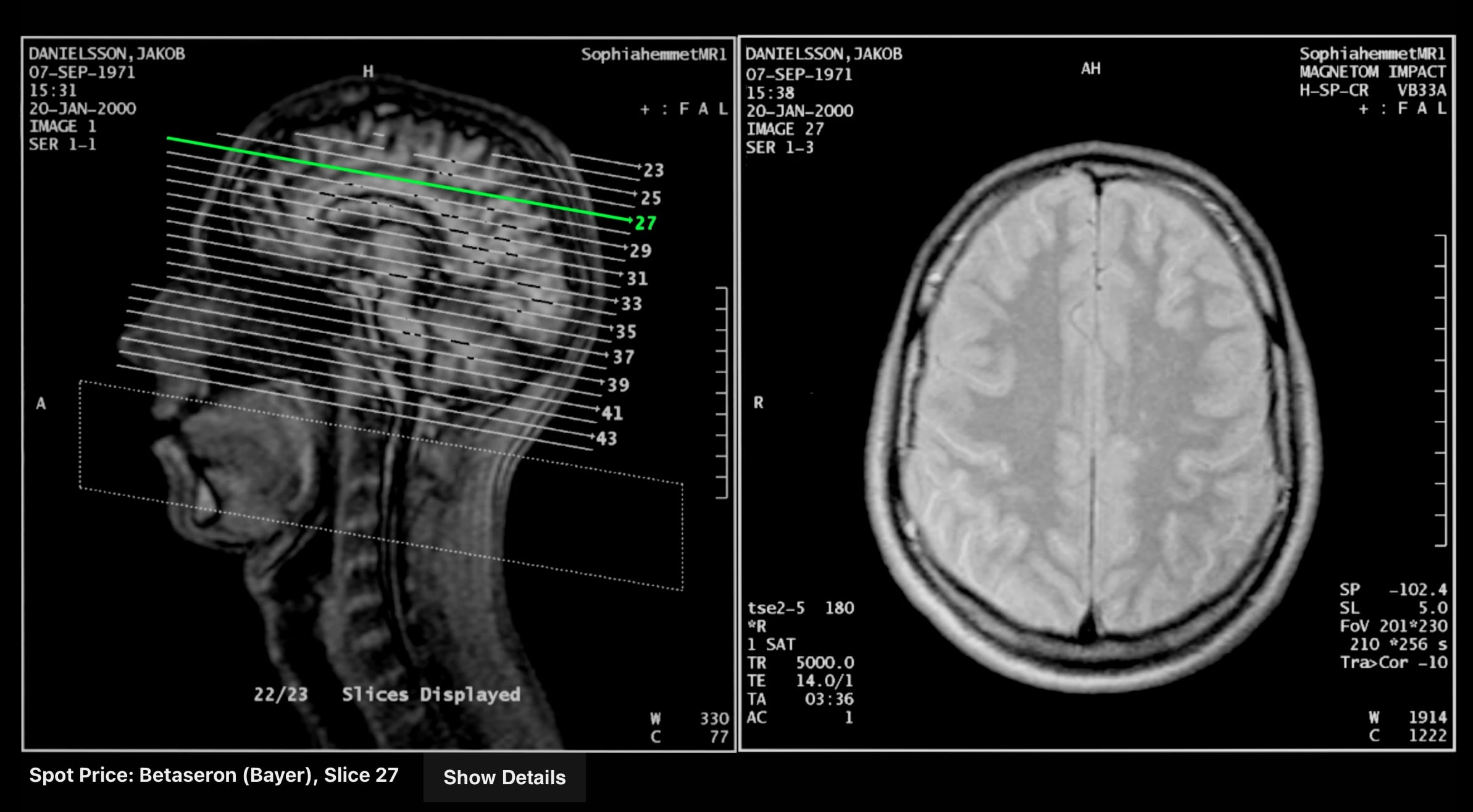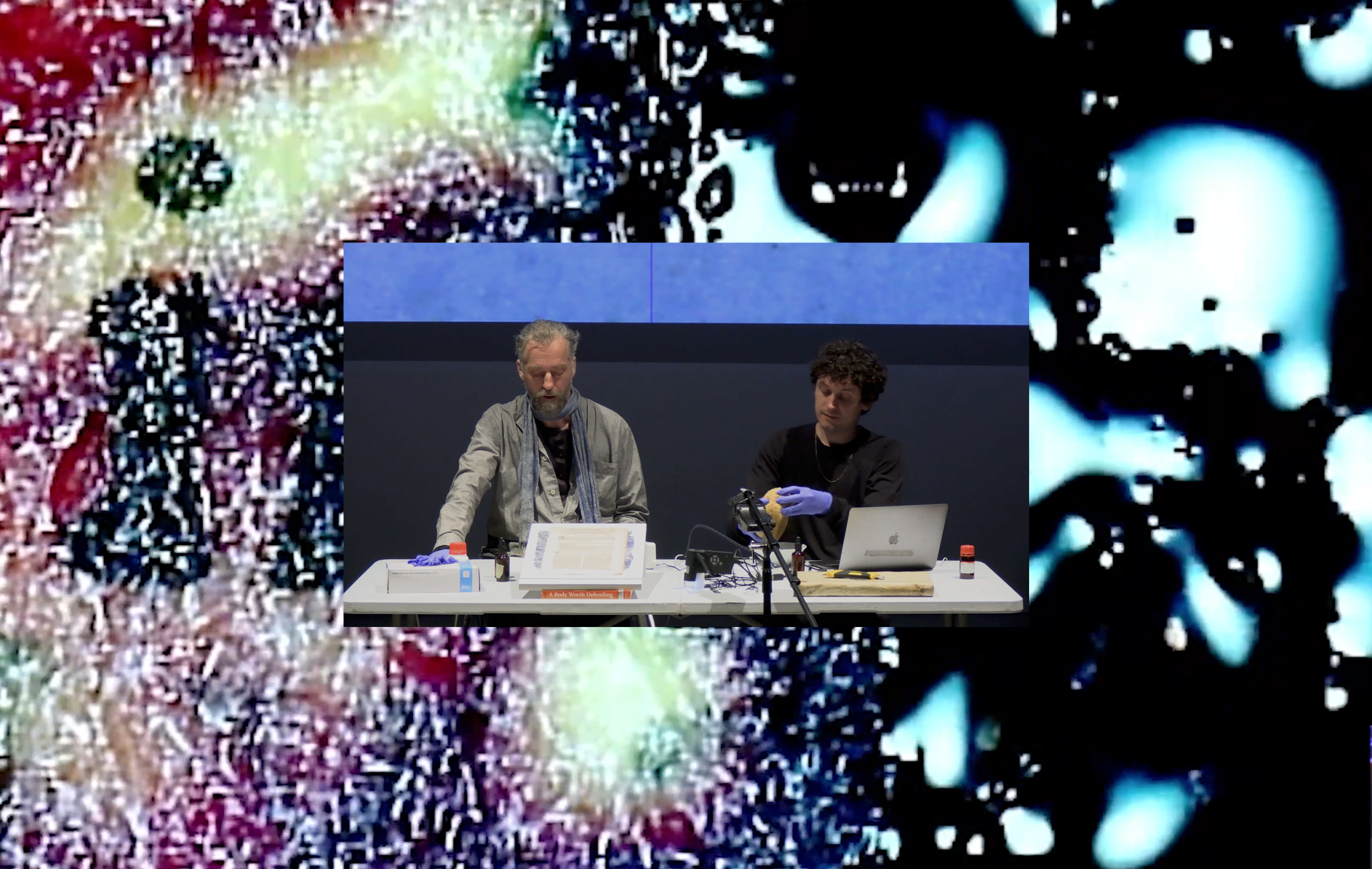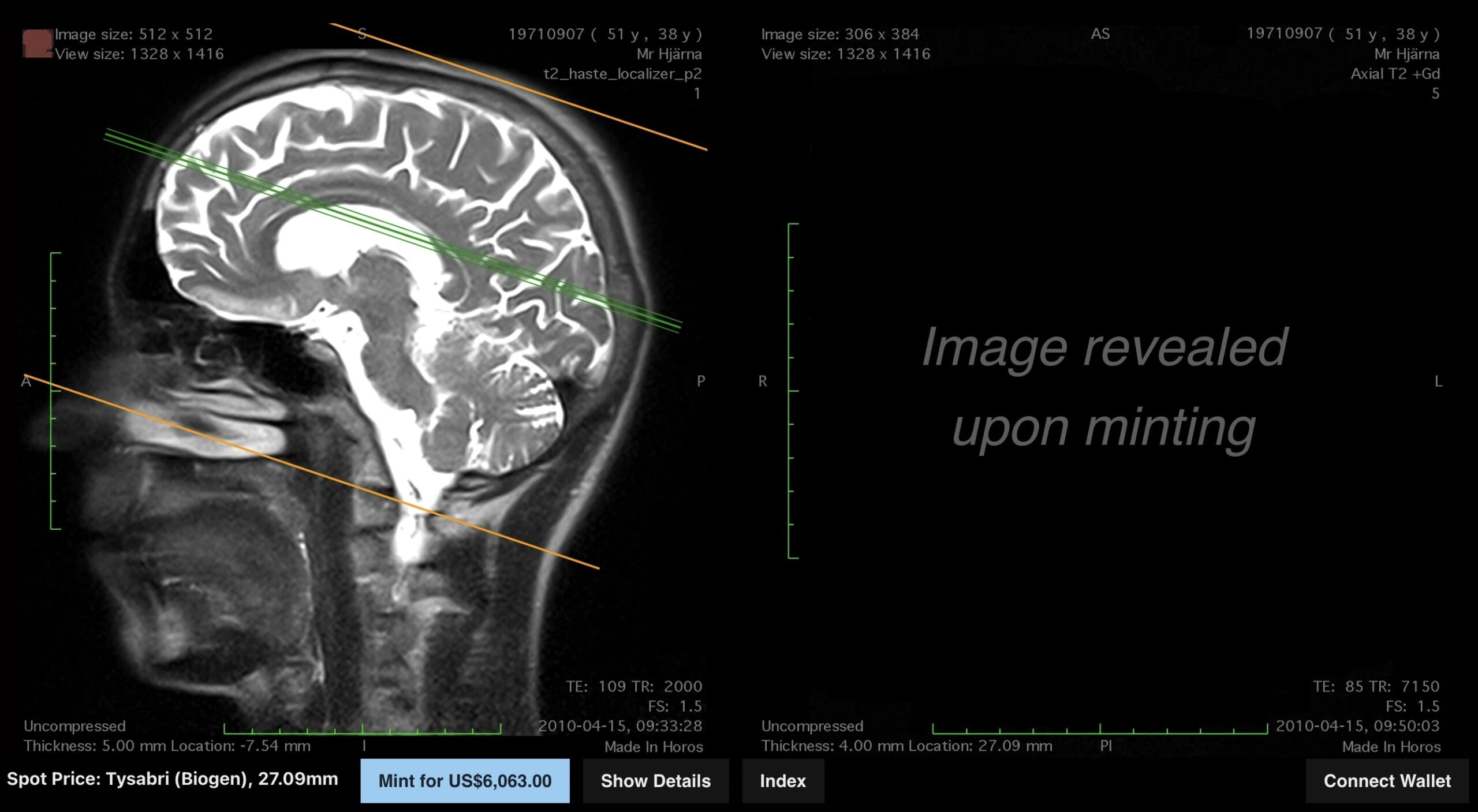Manual Override
In the work of Tyler Hobbs, the relationship between humans and machines is filled with productive tensions.


For a long time, Goldin+Senneby stayed out of sight. The artist duo, who began their collaboration after meeting at art school in Stockholm, would devise elaborate schemes involving their withdrawal from public view. Their earliest work, The Port (2004–06),was a community-driven platform on Second Life which served as the hub for the production of a magazine, among other activities. Headless (2007–15) was a sprawling investigation into offshore finance—itself, of course, another kind of virtual realm—with the many outputs including presentations by academics and curators and a ghost-written detective novel. Goldin+Senneby paid actors and other agents to perform roles and tasks. This strategy of outsourcing labor and production was carried through to subsequent projects exploring other financial inventions such as short-selling and quantitative easing—a meta-artistic method for Goldin+Senneby to draw out what they have described as “the structural correspondence between conceptual art and finance capital.” (One half the duo, Simon Goldin, also holds a degree from the Stockholm School of Economics, which he pursued as a form of artistic research.) Bearing little resemblance to the skilled artisans of yore, the conceptual artist of today has more in common with a manager, the kind who prefers emails and phone calls to face-to-face meetings.
There has been a significant shift in Goldin+Senneby’s practice, from withdrawal to exposure and from the virtual to the corporeal.
Over the last few years, there has been a significant shift in Goldin+Senneby’s practice, from withdrawal to exposure and from the virtual to the corporeal. This shift is encapsulated in their latest output, Spot Price (2023): a series of blockchain-based works released by Nome Gallery with Triple Canopy. The work is made up of three sets of five NFTs, each consisting of a group of MRIs taken of Jakob Senneby’s brain, where white spots indicate areas of inflammation due to the autoimmune condition of multiple sclerosis. The smart contract, written by developer Alberto Granzotto, links the price of these images to the current cost of the drugs Senneby has been prescribed over the years to mitigate the effects of MS. As the artists explain in “Regions of Interest,” an essay accompanying the project, Senneby was diagnosed with MS more than two decades ago—the first brain scan in Spot Price is from that appointment on January 20, 2000. It was his MS diagnosis which motivated him to leave his corporate job and enroll in art school. Initially, he only shared his condition with a small circle of people, and it was especially easy to keep the information contained because of the detached role that Goldin+Senneby maintained in their work. Goldin became a “collaborator in concealment,” taking on whatever labor Senneby was unable to carry out. But then, as Senneby’s mobility issues increased, he started using a cane, which inevitably led to inquiries about his health. “As I shared the news, I began to reconsider my work as an artist,” he said in an interview. “After so many years of elaborate fictions and theatrics, I wanted a different story for myself, one that would allow me to reckon with weakness and dependency.”

The experience of disease was a new field of interest for Goldin+Senneby, at least superficially unrelated to their past areas of expertise. As with earlier projects, however, Goldin+Senneby’s work on MS is expansive and multi-faceted, involving extensive research and collaborations and taking different forms at different stages. (One of the planned outputs is a novel-in-progress by the acclaimed author Katie Kitamura.) And Spot Price, their first foray into blockchain technology, came about somewhat unexpectedly. The artists had been undertaking a residency at Amant in New York where, they pointedly note, Senneby’s declining mobility and a lack of elevators meant that the artists were confined to a “windowless ground-floor closet.” As part of the residency, in spring 2022 they put together a lecture-performance which interwove a personal account of living with MS and a historical examination of narratives of immunity. The artists were uncomfortable with the militaristic language used to explain autoimmune conditions such as MS, in which the immune system—the body’s “natural defense system”—is described as mistakenly “attacking” its own tissues, in this case damaging the protective sheaths that cover nerve fibers. Could there be aspects of the patient’s experience, and of the disease itself, that doctors are overlooking when they view everything through the lens of attack and defense? After the presentation, Amant founder Lonti Ebers told Goldin+Senneby that they should get in touch with her brother, an MS researcher called George Ebers whose work has called into question another fundamental narrative of MS: how the disease is tracked and treated.
Ebers believes there is no strong evidence that existing drugs for MS, which work by suppressing or “modulating” the immune system, prevent the long-term progression of the disease. What these drugs have been proven to do is reduce the pockets of inflammation around scar tissue caused by nerve damage, which appear as white spots on brain MRIs. The drugs also reduce the occurrence of relapses—temporary periods of worsening symptoms that happen during the relapsing-remitting stage of MS. But there appears to be no correlation between the level of inflammation around scar tissue, or the frequency of relapses, and the permanent deterioration that happens during the “progressive” stage of the disease. Moreover, drugs that interfere with the immune system can increase the risk of serious infections. “Regions of Interest” relates a terrifying incident in which Senneby discovers that the drug he is taking, Tysabri, has been linked to deaths from a lethal brain infection. And yet, the prices of these drugs continue to rise, earning huge profits for their manufacturers.

Companies want the drugs to work, so they can sell them. The MRIs showing white spots on the brains of patients—and their shrinkage over the course of treatment—are the highly prized evidence they need. As Senneby exclaimed to Goldin after their visit to Ebers: “My white spots are my most valuable asset!” Spot Price cleverly unpacks the implications of this statement. Each of the sets of MRIs was taken when Senneby was prescribed a certain MS drug. The drugs, and the companies that own them, are given in the titles of the sets: Betaseron (Bayer); Tysabri (Biogen); and Gilenya (Novartis). But only once an individual NFT is minted will the axial image of the brain, where the white spots are most visible, be revealed alongside the vertical image. And the cost is high; the smart contracts are written so that the value of each NFT is pegged to the latest price for a one-month supply of the drug it is named after, as reported by the US Centers for Medicare and Medicaid Services. So far only one NFT has been minted: an MRI taken when Senneby was prescribed Betaseron upon diagnosis in 2000, although he never actually took the drug because he was afraid of the required injections. The buyer paid 8,457.68 USD. The Gilenya NFTs are currently priced at 8,821.68 USD and Tysabri at 6,063.00 USD. In other words, the spot price of the drugs determines the price of Senneby’s spots. (As the artists point out, “spot price” is a financial term for the current price at which a given asset can be bought or sold in a marketplace. Yes, Goldin+Senneby are keen on wordplay.)
NFTs are a fitting medium, illustrating the speculative logic that underpins medical research and treatments in much the same way as it drives sales of digital artworks.
In Spot Price, then, Goldin+Senneby reapply the strategy of their earlier conceptual projects: holding up a mirror to the absurd workings of financial systems through mimicry. In this case, NFTs are a fitting medium, illustrating the speculative logic that underpins medical research and treatments in much the same way as it drives sales of digital artworks. Only now the artist-managers are not hidden away behind computer screens at head office. With the images of Senneby’s brain, as well as the frank account of living and caring for someone with MS that accompanies these images, the reality of their physical existence is fully exposed. Whichever stories we choose to believe, there is nothing virtual about the human body, its vulnerability to weakness and disease and the corruptions of the market.
Gabrielle Schwarz is Outland’s deputy editor.
